GM has produced a number of electric vehicles over the years, ranging from the 1960's Electrovair to the 1990's more famous -- and infamous -- EV-1 and S-10 EV. In 2010, GM released the Chevy Volt, an electric car with a gas range extender, but it wasn't until 2013 that GM produced another all-electric car, the Chevy Spark EV. In late 2016, GM released its next all-electric, the Chevy Bolt EV.
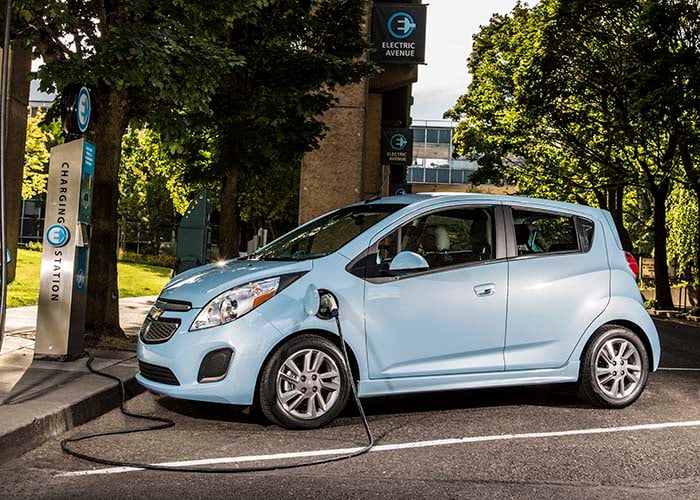
In this article, I want to focus on the Bolt EV and Spark EV because they are the GM EVs that are currently available on the new and used market, and they are the most dependent on the public charging infrastructure. The Volt can also use the public charging infrastructure, but it was designed to be charged primarily at home or work and to use the gas backup generator in times when convenient charging isn't available. I actually drove my 2012 Volt for a week solely on gasoline when the charging system was disabled due to an error code that needed to be cleared.
The Bolt EV and Spark EV, on the other hand, must have access to charging in order to function. While most owners will charge at home or work at least 90% of the time, GM included an optional CCS (Combined Charging System) port for DC fast charging for longer trips and when home or work charging is not available.
Chevy Bolt EV's "Slow" Charging Speed
The top complaint you'll hear about the Bolt EV's charging system is its "slow" charging speed, but that criticism usually doesn't come from actual Bolt EV owners. Rather, it's coming from owners of other EVs who believe (sometimes correctly, sometimes incorrectly) that the EV they own charges faster.
In reality, many of those EVs don't charge faster. Charging rates can be a confusing topic, and in this case, it's due to the disconnect between charging rates and battery sizes. Some people assume that because a BMW i3 with a 30 kWh battery can charge from 5% to 80% battery in 30 minutes, the i3 is somehow charging faster than the Bolt EV, which only goes from 5% to 43% in the same amount of time. However, in both cases, the cars are adding 22.5 kWh in 30 minutes, virtually identical charging rates on the most common, 50 kW public chargers. Both cars added about 90 miles of EPA range in those 30 minutes.
That 45 kW charger example also aligns with GM's literature, which states that the Bolt EV can add 90 miles of range in 30 minutes. When faster public chargers are available, though, the actual charging speed is much faster. In fact, both the Bolt EV and Spark EV can charge at speeds closer to 55 kW, which (relative to EPA rated efficiency) is actually closer to 110 miles of range in 30 minutes. In a recent article, I breakdown the Bolt EV's charging speed in terms of miles per hour charged.
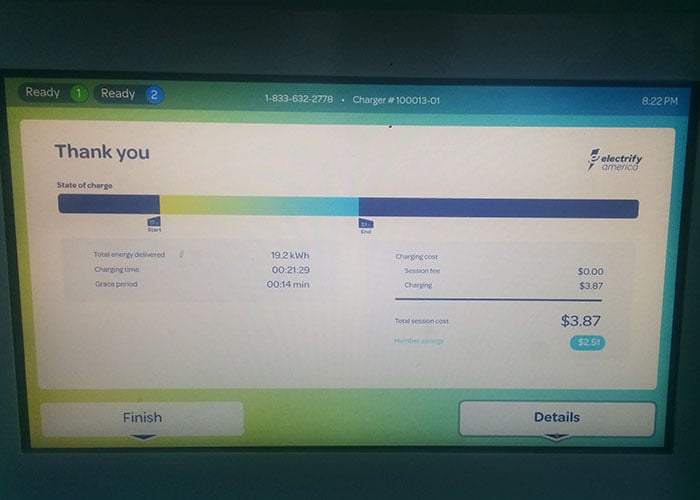
Now don't get me wrong. Faster will always be better when discussing charging speeds, and GM should work on improving the DC fast charging speeds of their vehicles. That is especially true for GM's vehicles moving forward because competitors such as the Hyundai Kona Electric and Kia Niro EV are currently capable of 75 kW charging rates (a full 20 kW faster than the Bolt EV). However, charging speed is not the most pressing issue that needs to be addressed with older Bolt EV charging systems.
Chevy Bolt EV's Aggressive Charging Taper
If you can successfully communicate to critics that the Bolt EV's charging speeds aren't significantly slower than many of the other EVs on the market, the next complaint will be the Bolt EV's aggressive charging taper. I give this concern a little more weight, not because I agree that the curve is too aggressive but rather because I think GM could have managed it better.
In 2016, the Bolt EV surprised many people because GM used cheaper, more energy dense batteries than what were typically seen in EVs up to that point. One of the tradeoffs for the additional range at lower weight was that the batteries were only rated for a 1 C charging rate (essentially, the maximum charging speed was the rate that would charge the battery from empty to full in one hour), so the Bolt EV's charging rate was slower relative to the size of its battery. The Spark EV served as a perfect contrast with its more power dense batteries. The Spark EV charges at roughly the same speed as the Bolt EV despite having a battery that is 1/3 the size.
The other constraint of using the more energy dense batteries is that they cannot maintain their peak charging current (amps) for as long as the smaller, more power-dense batteries. As the current drops, the charging rate decreases. For the Bolt EV, its peak charging current of 150 A drops to 105 A between 45% and 55% battery (depending on the internal battery temperature). The Spark EV, on the other hand, can maintain its peak charging current to 80% battery.
Now, looking at this objectively, it's easy to see a pattern with electric vehicles that have higher energy density batteries. The Bolt EV stood out because it was the first, but cars such as the Hyundai Kona Electric and Kia Niro EV have similar tapers. Their batteries are larger than the pre-2020 Bolt EV's battery, which is why they maintain faster charging speeds throughout, but their step downs in charging current occur at similar points in the charging curve.
Here's why I still think this is a somewhat legitimate criticism that GM should address and update on all pre-2020 Bolt EVs. At the time of the Bolt EV's release, the fastest public chargers available were 50 kW (125 A maximum), and they are still the most prevalent public chargers today. Under 55% battery, the Bolt EV was already capable of charging faster than those chargers could support, but at the step down, the Bolt EV's charging current would drop to 105 A, well below the charger's 125 A max.
From 55% to 70% battery, the Bolt EV charges at about 15% slower than these 50 kW chargers can support, and that is what I think GM needs to change. I somewhat understand their reasoning because that is the period during the charging session when the Bolt EV will draw additional power from the charger to condition (heat or cool) the battery. I've observed the Bolt EV drawing nearly the full 20 A of extra, available current from the charger during these periods, which is why it's best to let the Bolt EV continue to charge to 65-70% (even though it appears slower).
However, I think that, when the battery temperature allows, the Bolt EV should be allowed to charge at the maximum 125 A until the 65-70% step down. That way, the Bolt EV would always be maximizing its effective charging rate and drawing the maximum power possible on the 50 kW public chargers. Bolt EV owners would still observe a decrease in charging speed on the newer, faster chargers after reaching 55% battery, but at least the Bolt EV would continue to draw as much power as the standard 50 kW public chargers could provide.
Chevy Spark EV Compatibility Issues with ABB Chargers
A much more pressing EV issue that GM needs to address at this point is with the Spark EV (this is an issue that possibly extends to the Bolt EV as well). Sure, the Spark EV is no longer being sold, but GM really does have an obligation to continue supporting it.
First, here’s a bit of background information. Over the past year, as Electrify America has been rapidly building its new charging network, which currently includes nearly active 300 sites in the United States. Electrify America selected four different companies to provide the actual charging units: ABB, BTC Power, Efacec, and Signet.
It appears that many of these chargers have been deployed regionally (certain states and regions are more likely to have specific brand of charger). This has already caused problems for the Electrify America Network, which had to restrict the charging speed an entire corridor of Efacec chargers due to a design and manufacturing defect.
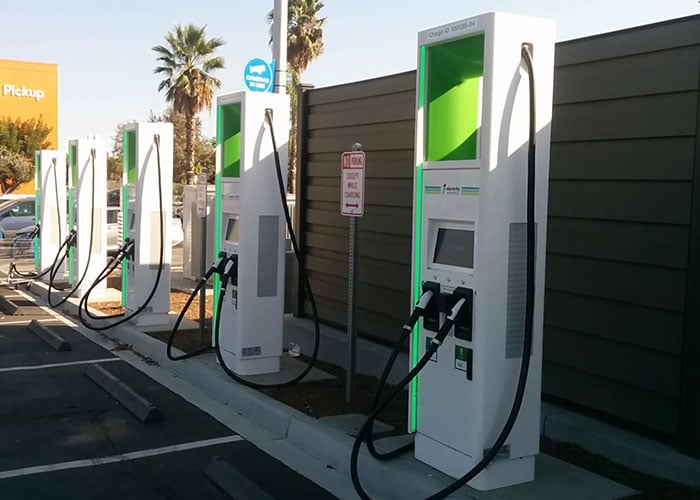
The South Western United States, including California, appears to principally be populated by Terra HP chargers, ABB’s new high-powered DC fast charger capable of outputting 350 kW, and that’s where the issues start. A number of Spark EV owners have reported that they are unable to activate charging sessions on these new ABB units. This has significantly impacted perceptions about Electrify America’s reliability as a charging network, not to mention inconveniencing a number of Spark EV owners. One Spark EV owner even escalated the incident to ABB and Electrify America. According to PlugShare user EV Rider:
“Good meeting today at the EA chargers in Livermore. I met with a representative from EA and a technical representative from ABB, the manufacturer of the chargers. The ABB rep took a lot of charger data as I demonstrated multiple times on two chargers that my 2016 Spark EV could not charge. He will take this data back to ABB and start working on a fix.”
Up to this point, the burden seems to be on the charging networks and hardware providers to address any incompatibilities with electric vehicles. Bjorn Nyland demonstrated very similar issues with his European Tesla Model 3 while attempting to use the Ionity charging network. In his video, Bjorn explains that it is typically the charging providers who are responsible for ensuring that their chargers work for all vehicles that attempt to use them.
However, I don’t want to let GM off the hook here because, based on my experience, the Bolt EV also has similar issues with ABB Terra HP. On several occasions, my Bolt EV has encountered an error that ended the charge session on these new ABB chargers. I still don’t have issues activing a charge (like Spark EV owners do), but it happens frequently enough (right around the time the Bolt EV’s charging rate steps down) for it to raise a flag. Also, this has happened not just on Electrify America chargers but also on the EVgo network’s Terra HP chargers.
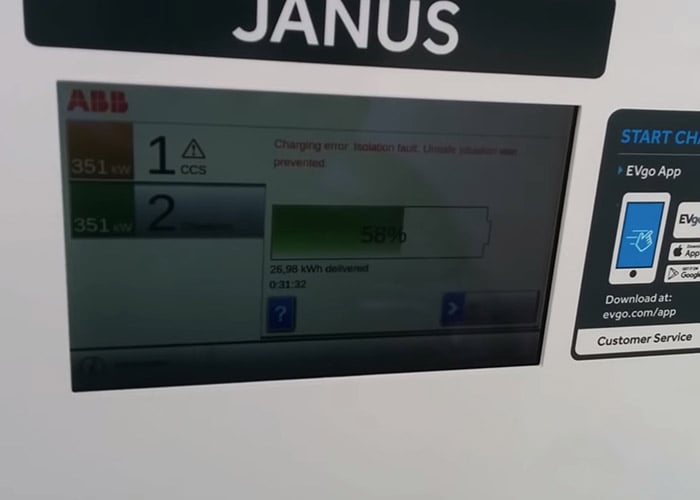
Regardless of who is responsible, with the number of California Spark EV owners and the number of new Terra HP chargers being installed in California, this issue needs to be resolved.
Chevy Bolt EV Charging Port Issues with Liquid Cooled Cables
The final concern is an issue that seems to primarily affect the Bolt EV; however, it also appears to affect older models more than newer models, so GM might have already addressed the issue quietly. When using DC fast chargers with standard, non-liquid cooled cables, Bolt EV owners can simply plug in and activate the charger without holding the plug in place. However, the heavier, liquid-cooled charging cables appear to cause some sort of error or fault in the Bolt EV’s charging system.
The workaround for this is quite simple: The Bolt EV owner needs to hold the charging cable in place (slightly lifting up and toward the latching mechanism) as the charging session initiates. After the charging session as started, they can let go and treat it like any other charging session (essentially, go have dinner, take a break, whatever they feel like doing with their time).
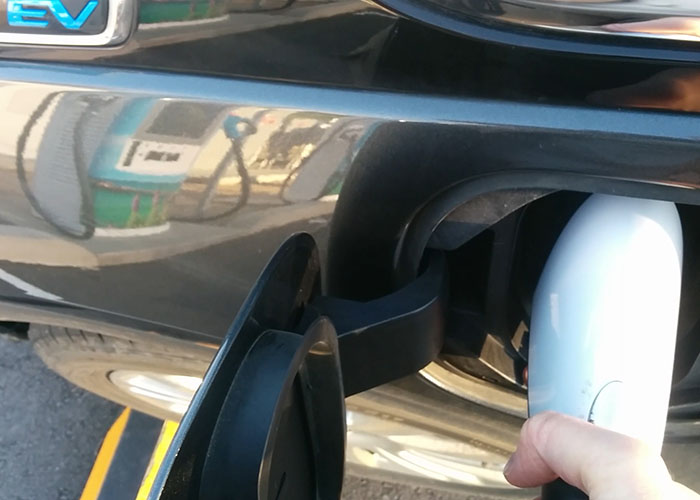
GM has never officially acknowledged this issue other than to say that they haven’t made any changes to the Bolt EV’s charging port over the years, which doesn’t seem to make sense if newer Bolt EVs don’t suffer from the same problem. This isn’t a concern if the Bolt EV owner is aware that it might happen, but it’s the awareness itself that seems to be the bigger issue. And again, Electrify America’s reputation seems to be bearing the brunt of this, as a number of failed charging attempts reported on their network could be the result of Bolt EV owners who are simply unaware that they need to hold the heavier cables in place when activating a charge.
Even before liquid-cooled charging cables were deployed, this was something of an issue with the Bolt EV. The latching mechanism on CCS plugs can break off if the plug is abused or mishandled. If the latch is missing, my Bolt EV will not activate a charge using that plug head. However, I’ve literally watched a BMW i3 owner pull into a charger I just abandoned due to a broken latch, and they were able to active a charge without issue. My only assumption is that something in GM’s software will not allow the vehicle to activate a charge unless it can verify that the charging plug is firmly and securely in place. Other automakers might have simply bypassed that safety protocol.
If that is the case, I can appreciate GM’s prioritizing safety first. However, if that is their reasoning, I would like to see them design their plugs in a way that accounts for both. They could use a different plug angle, a more powerful actuator, or whatever effectively solves the problem while maintaining safety.
Regardless of who is responsible, something needs to be done to address these, and based on the nature some of the problems, charging providers can’t be the only ones providing fixes.
See you next time when I look into why a Chevy Bolt EV might have caught on fire.
About The Author
Eric Way focuses on reporting expert opinion on GM brand electric vehicles at Torque News. Eric is also an instructional designer and technical writer with more than 15 years of writing experience. He also hosts the News Coulomb video blog, which focuses on electric vehicles, charging infrastructure, and renewable energy. Eric is an active member of the EV Advocates of Ventura County, a volunteer organization focused on increasing the widespread adoption of electric vehicles. You can follow Eric on News Coulomb Youtube, on Facebook at @NewsCoulomb as well as on Twitter at @eway1978.

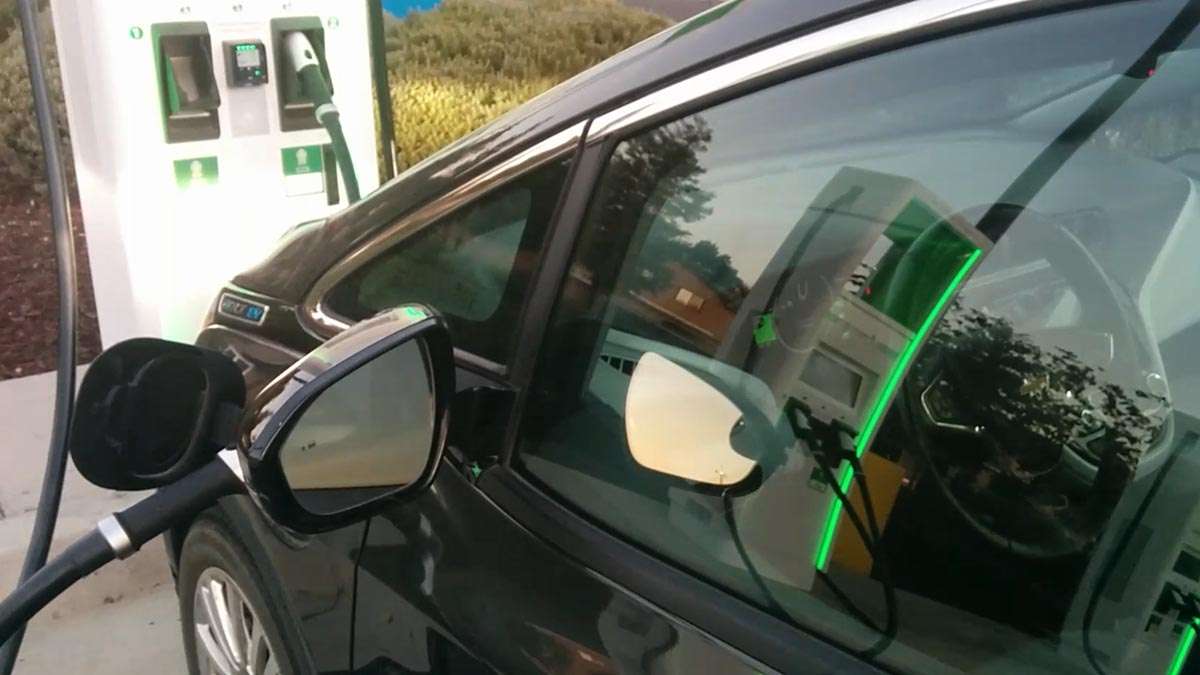




Comments
I have similar comms issues
Permalink
I have similar comms issues with BTC chargers and my Spark EV. I thought it was limited to older 25kW DC fast chargers from BTC that were installed years ago in the IRVINE Spectrum, but recently I tried to charge at a new 150kW Electrify America BTC charger at the Torrance Del Amo Mall and had the same issue. Ironically, I have never had an comms issue with an ABB charger. I have 83,000 miles on my Spark EV with a hundred or so fast charges in the LA area.
Interesting. So you were
Permalink
In reply to I have similar comms issues by NateDogg (not verified)
Interesting. So you were having issues with the new BTC Chargers? Or the older versions? GM EVs seem to be very sensitive about the connection with the charger.
It has been almost three
Permalink
It has been almost three months since I met with the EA and ABB folks at the EA chargers located at the San Francisco Premium Outlets in Livermore, CA and I still cannot get an answer as to when I will be able to use the ABB EA chargers at that or any other location.
I can now charge my 2016
Permalink
I can now charge my 2016 SPARK E+V on the ABB CCS Fast Chargers. In Jan 2020 they added a software fix to the ABB units in the Arizona area. I had a 52 kW rate when I tried them.
Now I just wish I could double the L2 rate of my Spark EV. It only has a 3.3 kW On Board Charger. I want to swap to a Bolt OBC . Until then I have a 10 kW portable SETEC Fast Charger I can connect to any public J-1772 or Tesla Destination charger for a 6 to 10 kW charge.
Hello, love your videos and
Permalink
Hello, love your videos and drive a bolt myself. Have you heard of an issue where the a 2019 chevy bolt, during a fast charging session, stops charging after 10 minutes? Charger is a BTC 200 kW capable. Any advice or who I can reach out to would be awesome. Thanks! Keep up the great work!